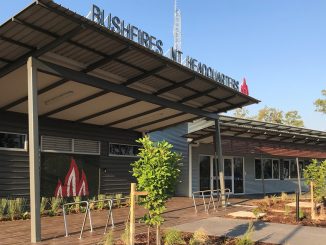
Schools have reported higher student engagement and the establishment of positive relationships between students and police officers.
Originally introduced in the 1980s, the refreshed school-based police program was introduced in 10 government schools across the Territory at the beginning of Term 4, 2018, after it was scrapped by the Country Liberal Party government.
A review of the program undertaken earlier this year outlined the positive impact and relationships which have grown between the school-based officers, students, staff and families. Students have stated that it, “is very important to have police here at school…we see them walking around.”
In its first six months of operation, the SBP Program has been well received by schools, with principals acknowledging the importance of “proactive policing.” A principal in a feeder primary school commented, “proactive policing is very important – particularly for primary aged children, and Indigenous children who often see police in a different light when undertaking reactive policing duties…we now have an Indigenous student wanting to be a police officer since the arrival of SBP at the school.”
Stakeholders who contributed to the review included North Australian Aboriginal Justice Agency (NAAJA), Aboriginal Peak Organisations Northern Territory (APONT) and the Northern Territory Council of Social Services (NTCOSS).
The new school based policing model was designed in collaboration with the Department of Education, the Council of Government School Organisations (COGSO) and the Northern Territory Police Force.
It was the 2017 CGSO Annual General Meeting that saw school councils presenting motions for the re- instatement of SBP officers. The request for the program was also prompted by the increasing youth crime rate affecting businesses and homes in the urban centre of the NT along with an increase in violence, physical, verbal and cyber bullying threats/assaults being made by students at a school level.
Although the program has been in schools for just two terms, the outcomes have been noticed by schools and students across the NT as illustrated from interviewed students who stated, “Yes, it has made a difference having SBP here at school … even if we don’t see them often, they are like the silent security.” “We have had no major fights this year … violence has decreased considerable since SBP came in.” “Having SBP here is a good influence for everyone … there is a lot less negative behaviour happening in class and less threatening of teachers/students in general.”
Michael Gunner, the Minister for Children said, “We brought back the renewed school-based policing model in 2018 because we know it enables us to identify at-risk kids, to re-engage them to grow, learn and achieve, and set them on the right track to a bright future.” Designed to be a proactive measure to stop crime and build relationships between students and police, the school-based police program in the Northern Territory is showing signs of achieving that success.
Image Credit: Katherine Times





1 Trackback / Pingback